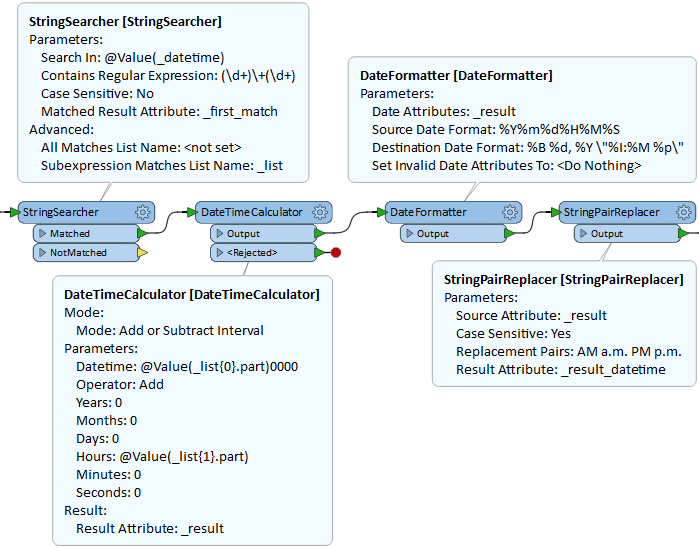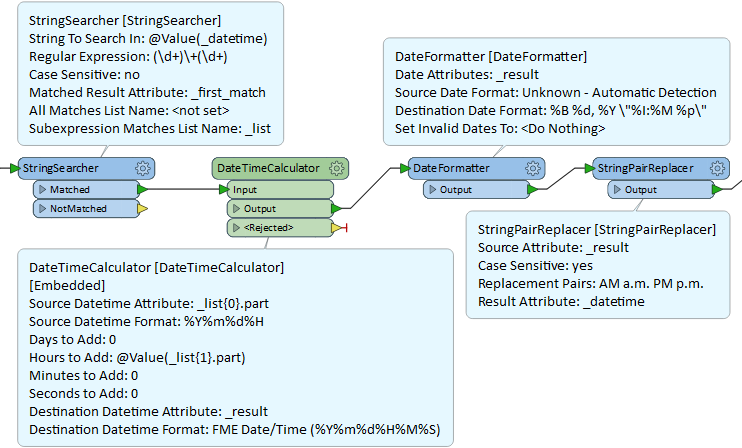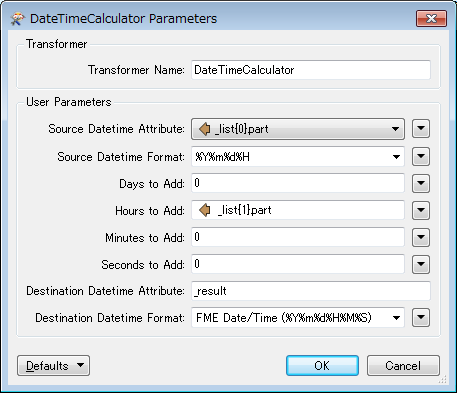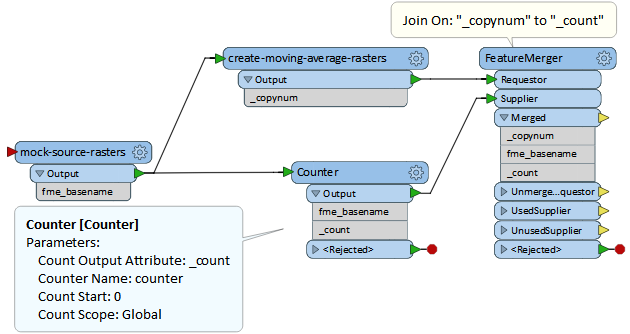Dear FME Users,
I’d like to process 73 input NetCDF-files. The files describe 3 days (73 hours). Every single file stands for one hour. The NetCDF-files don’t include any useful time attribute.
What I need is the timestamp for every single input written in an attribute .The data type should be “date”.
In the following you can take a look to the assignments (input files -> time):
- HRES_ENS_2017062200+019 -> June 22, 2017 “07:00 p.m.”
- HRES_ENS_2017062200+025 -> June 23, 2017 “07:00 a.m.”
- HRES_ENS_2017062200+071 -> June 24, 2017 “11:00 p.m.”
What I can do in FME is to extract the substrings I need (e.g. “2017-06-22-19”).
I’ve tried following transformers too: “DateFormatter”, “DateTimeCalculator” and “TimeStamper”.
Do you’ve an idea how to solve it?
Thank you very much and best regards!
Konrad











